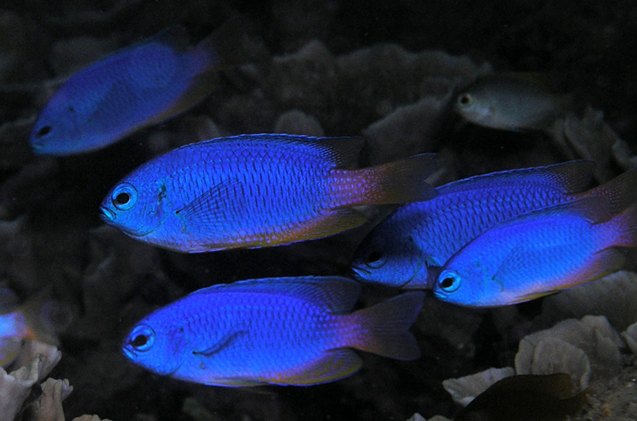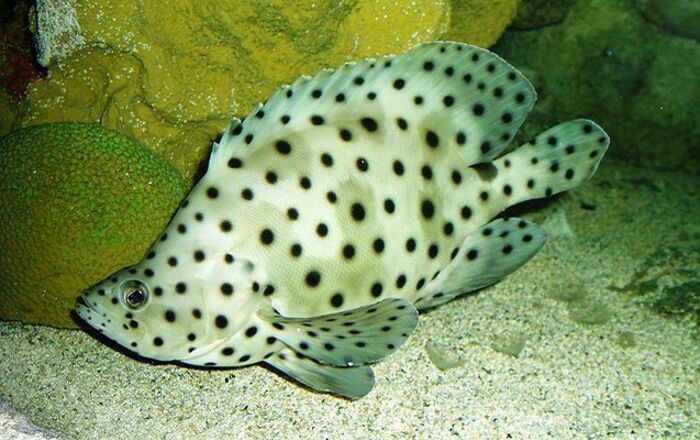
Damselfish General description
Damselfish are a colorful species of saltwater fish extremely popular in the modern saltwater aquarium hobby. Their small size, hardy nature and high availability have made them a popular choice of fish for new aquariums. Tank raised varieties are readily available in pet stores and aquariums and are significantly hardier than their wild-caught counterparts.
Damselfish are a colorful species of saltwater fish extremely popular in the modern saltwater aquarium hobby.
Origins
Damselfishes originate from tropical coral reefs around the world.
Color
Most species are vibrantly colored and come in shades of blue, yellow, red, orange, black and white.
Maintenance and care

Damselfish are capable of adapting to a wide range of aquarium conditions. Most species of damselfish only grow up to a couple of inches in length so can be housed in small to medium-sized aquariums. Damselfish also do best when kept in groups of 4 or more and can be kept in even larger groups when provided with adequate space. They can however turn aggressive and territorial towards other species of fish as they age; especially fish that are introduced later on to an aquarium. This is sometimes a concern when using damsels as starter fish to cycle an aquarium.
Damselfish do best in aquariums with open swimming spaces as well as plenty of hiding places. Each damselfish will establish and guard its own territory with one or more hiding places.
Feeding
Damselfishes are omnivores and will readily accept flake based foods as well as live and frozen foods. However, it is important to research the specific dietary requirements of individual species. For example, certain species are herbivores.
Damselfish are capable of adapting to a wide range of aquarium conditions.
Breeding
Damselfish have been successfully bred and raised in aquariums. When spawning, males will often court a number of females and entice them to lay eggs in their nesting sites. They will care for all the eggs laid in their nest, but do sometimes devour younger eggs so they can devote their parental efforts to the more mature eggs which are closer to hatching. Males engage in a frantic mating dance where they swim up and down in a column, emitting a pulse which indicates their vigor to potential females. The females choose their partners based on the speed and vigor of the males’ mating dance.
Aquarium varieties
Yellowtail Damselfishes, Blue Damselfishes, Three Stripe Damselfishes, Blue and Gold Damselfishes, Neon Damselfishes, Tracey’s Damselfishes, etc.
Photo credit: Nick Hobgood/Wikimedia; Carl Malamud/Flickr















